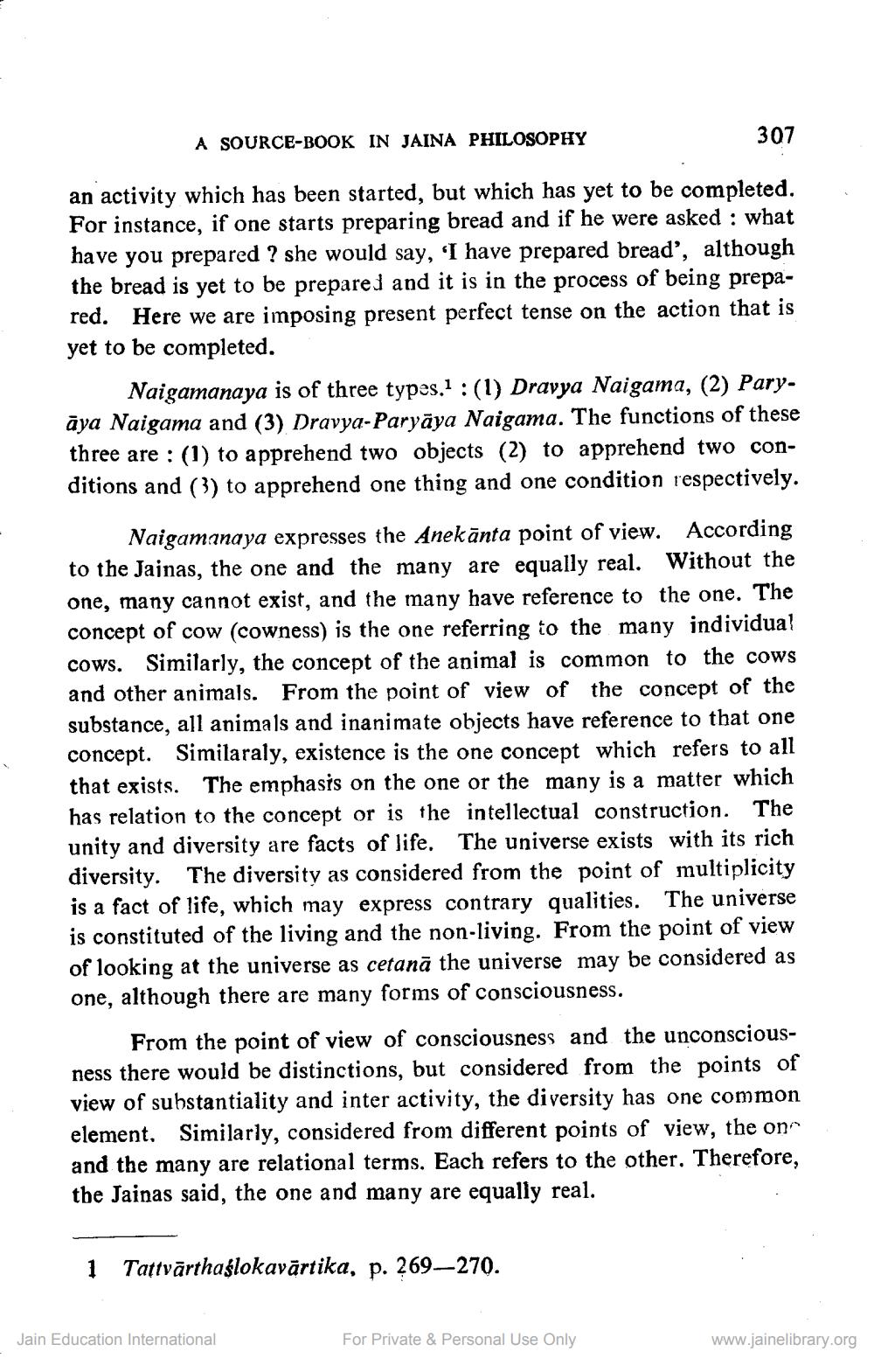________________
A SOURCE-BOOK IN JAINA PHILOSOPHY
307
an activity which has been started, but which has yet to be completed. For instance, if one starts preparing bread and if he were asked : what have you prepared ? she would say, 'I have prepared bread', although the bread is yet to be prepared and it is in the process of being prepared. Here we are imposing present perfect tense on the action that is yet to be completed.
Naigamanaya is of three types.? :(1) Dravya Naigama, (2) Paryāya Naigama and (3) Dravya-Paryāya Naigama. The functions of these three are: (1) to apprehend two objects (2) to apprehend two conditions and (3) to apprehend one thing and one condition respectively.
Naigamanaya expresses the Anekānta point of view. According to the Jajnas, the one and the many are equally real. Without the one, many cannot exist, and the many have reference to the one. The concept of cow (cowness) is the one referring to the many individual cows. Similarly, the concept of the animal is common to the cows and other animals. From the point of view of the concept of the substance, all animals and inanimate objects have reference to that one concept. Similaraly, existence is the one concept which refers to all that exists. The emphasis on the one or the many is a matter which has relation to the concept or is the intellectual construction. The unity and diversity are facts of life. The universe exists with its rich diversity. The diversity as considered from the point of multiplicity is a fact of life, which may express contrary qualities. The universe is constituted of the living and the non-living. From the point of view of looking at the universe as cetanā the universe may be considered as one, although there are many forms of consciousness.
From the point of view of consciousness and the unconsciousness there would be distinctions, but considered from the points of view of substantiality and inter activity, the diversity has one common element. Similarly, considered from different points of view, the on and the many are relational terms. Each refers to the other. Therefore, the Jainas said, the one and many are equally real.
1 Tattvārthašlokavārtika, p. 269–270.
Jain Education International
For Private & Personal Use Only
www.jainelibrary.org




